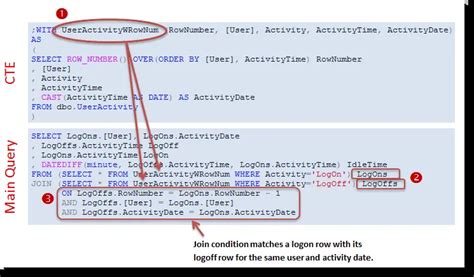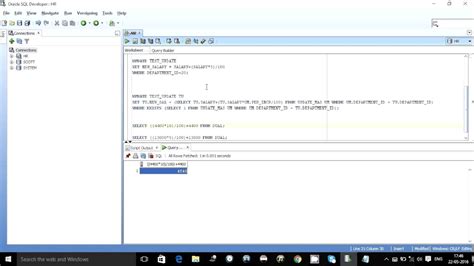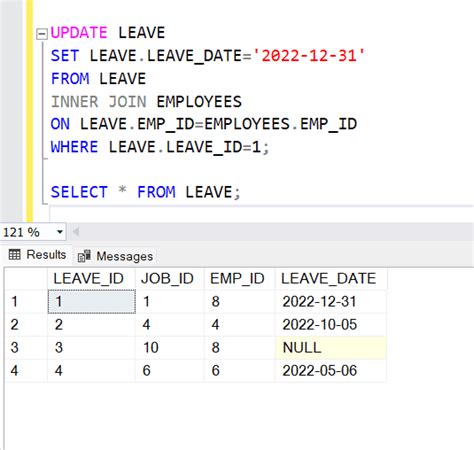SQL updates with inner joins are a powerful tool in database management, allowing for the modification of data in one table based on conditions specified in another table. This is particularly useful in scenarios where data relationships are complex and updates need to be applied based on matching conditions across tables. In this article, we will delve into the syntax, examples, and best practices for using SQL update statements with inner joins, providing a comprehensive understanding of this crucial database operation.
Understanding SQL Update and Inner Join Basics

Before diving into the specifics of updating with inner joins, it’s essential to have a solid grasp of both SQL update statements and inner joins. An SQL update statement is used to modify existing records in a table. It typically consists of the UPDATE keyword followed by the table name, a SET clause specifying the columns to be updated and their new values, and a WHERE clause to conditionally select which rows to update.
An inner join, on the other hand, is used to combine rows from two or more tables where the join condition is met. It returns records that have matching values in both tables. The basic syntax of an inner join involves the INNER JOIN keywords followed by the table name and the ON keyword specifying the join condition.
SQL Update with Inner Join Syntax
The syntax for an SQL update statement with an inner join varies slightly depending on the database management system (DBMS) being used. However, the general structure for updating table1 based on a condition from table2 can be represented as follows:
UPDATE table1
INNER JOIN table2
ON table1.column_name = table2.column_name
SET table1.column1 = table2.column2,
table1.column2 = table2.column3
WHERE condition;
This syntax is applicable in many DBMS, including MySQL. However, other systems like SQL Server and Oracle might require slightly different approaches, such as using aliases or subqueries to achieve the update with join functionality.
| DBMS | Update with Inner Join Syntax |
|---|---|
| MySQL | UPDATE table1 INNER JOIN table2 ON table1.id = table2.id SET table1.name = table2.name |
| SQL Server | UPDATE t1 SET t1.name = t2.name FROM table1 t1 INNER JOIN table2 t2 ON t1.id = t2.id |
| Oracle | UPDATE (SELECT t1.name, t2.name AS new_name FROM table1 t1 INNER JOIN table2 t2 ON t1.id = t2.id) SET name = new_name |

Examples and Use Cases

Let’s consider a practical example to illustrate the use of SQL update with inner join. Suppose we have two tables, employees and departments, and we want to update the department_name in the employees table based on the department_id matching in the departments table.
UPDATE employees
INNER JOIN departments
ON employees.department_id = departments.department_id
SET employees.department_name = departments.department_name;
This operation ensures that the department names in the `employees` table are up-to-date and consistent with the `departments` table, which might be the central repository for department information.
Best Practices and Considerations
When using SQL update statements with inner joins, it’s essential to follow best practices to avoid common pitfalls and ensure data integrity:
- Backup Data: Always back up your database before performing mass updates to prevent data loss in case something goes wrong.
- Use Transactions: Wrap your update statement in a transaction to allow for rolling back changes if necessary.
- Specify Conditions: Clearly define conditions in the WHERE clause to avoid updating more rows than intended.
- Test Queries: First, run a SELECT statement with the same join and conditions to see which rows will be updated.
Key Points
- SQL update with inner join allows for updating data in one table based on conditions in another table.
- The syntax varies among DBMS, including MySQL, SQL Server, and Oracle.
- Always back up data, use transactions, and test queries before executing updates.
- Specify clear conditions to avoid unintended updates.
- Refer to the specific DBMS documentation for the correct syntax and best practices.
FAQ Section
What is the primary use of SQL update with inner join?
+The primary use is to update data in one table based on matching conditions in another table, ensuring data consistency across related tables.
How does the syntax of SQL update with inner join differ among DBMS?
+The syntax can differ significantly, with variations in how tables are specified, joined, and updated. For example, MySQL uses a straightforward INNER JOIN syntax, while SQL Server and Oracle might require using aliases or subqueries.
What precautions should be taken before executing an SQL update with inner join?
+It’s crucial to back up the database, use transactions to allow for rollback, specify clear conditions to avoid unintended updates, and test the query first with a SELECT statement to ensure the desired rows are being targeted.
In conclusion, SQL update with inner join is a powerful operation that allows for the efficient updating of data across related tables. By understanding the syntax, best practices, and considerations for this operation, database administrators and developers can ensure data integrity and consistency, making informed decisions to manage and maintain complex databases effectively.
